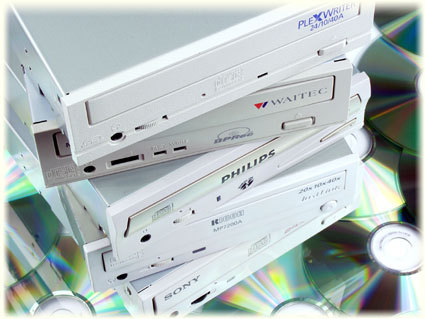Eleven 20x/24x CD Burners
Introduction
What differentiates one 24x burner from another? Theoretically, their performance is the same, they all use technology to prevent buffer underrun, and they come with much of the same type of software. But they do have subtle distinctions which are not widely publicized. Recording quality, compatibility with the available blank media, and a number of other specific functions can make all the difference, not to mention account for striking variations in price.
The CD-R/RW market changed completely in the late 90s and some things are now obvious. One is the spread of the CD-RW burner, with sales increasing exponentially over the past decade. This spread was due to both the drops in pricing and the standard use of the IDE interface instead of SCSI. 87% of the burners sold in 2000 were IDE models, and this is why we decided to use ones with this interface for these tests. This doesn't mean that we don't care about secondary interfaces such as USB 2.0, SCSI or IEEE-1394, but rather that we want to compare like with like in terms of performance and type of use. Another notable fact is that the ongoing price drops appear to be pushing the burner market into a downward spiral that some manufacturers are likely to find hard to stop. In the short term, the one who benefits is the consumer, who ends up paying less and less for burners which perform better and better, but in the long run this may not necessarily be such a good thing. Price has to be taken into consideration when buying a burner, but just because one model is cheaper doesn't mean it's the best.
Get Tom's Hardware's best news and in-depth reviews, straight to your inbox.
